7 Best Stargazing Spots in the USA
Have you ever dreamed of traveling to faraway worlds? Stargazing is your passport.
This easy hobby can keep you entertained and help you learn about the universe. As RVers and campers, we have a unique front-row seat when it comes to stargazing.
Many of our favorite camping destinations are also the best places to stargaze.
Join us on a cosmic tour of the top spots to stargaze around the United States!
What Is Stargazing?
Stargazing is just another term for astronomy – the science of observing and studying objects in space. These include the moon, the stars, galaxies, other planets, and sometimes even meteors, comets, or satellites.
But, fear not, you can stargaze for meditative and relaxation purposes, too!

Do I Need Any Special Equipment for Stargazing?
Many stargazers will use tools like binoculars or basic telescopes. Still, it can absolutely be done with the naked eye – especially when conditions are right.
Binoculars may be a good starting point, as they’re generally inexpensive and easy to use.
As your passion for the night sky grows, you can add equipment as necessary. Stargazing’s low-to-no-cost nature makes it an excellent hobby for those who love science and nature but live on a budget.

About International Dark Sky Cities and Parks
Dark Sky Cities and Parks are areas that observe strict guidelines to reduce light pollution and preserve the view of the night sky. They’re also designed to encourage eco- and astro-tourism and promote improved quality of life for residents – human and wild alike.
To become a Dark Sky Community, towns need to pass specific outdoor lighting regulations. They must also hold regular community education and awareness events.
In fact, the guidelines essentially require that you can see the Milky Way with the naked eye!
The parks also protect natural, scientific, or cultural heritage. Dark Sky Parks can be public land or privately owned, as long as public access is allowed.
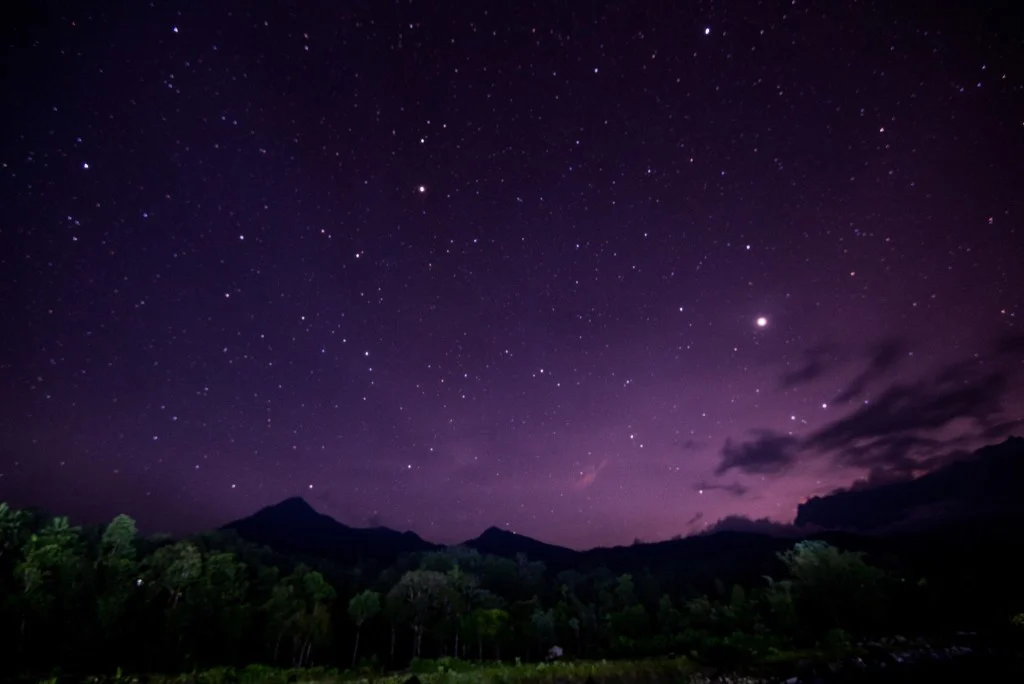
7 Best Stargazing Spots in the USA
The beauty of stargazing is you can do it just about anywhere except the most light-polluted cities. But your backyard or neighborhood park will rarely match the stunning beauty of remote stargazing locations throughout America.
Here are our picks for the seven best.
Big Bend National Park
Big Bend National Park is tucked away in a remote corner of West Texas. Lightly put, its several hours from just about anywhere.
Stargazers are rewarded with the least light pollution of any national park in the lower 48 states. Big Bend has been an International Dark Sky park since 2012. You can be confident park leaders are constantly working to maintain this honor.
Due to the remoteness and lack of much human-made light, there are no bad spots in Big Bend for stargazing. Favorites include the Hot Spring Canyon Trail, the Rio Grande Village Nature Trail, and the area around the park’s famous Santa Elena Canyon.
The Park offers a variety of stargazing events, from moonlight hikes to star parties. Seasonally, your best bet for clear nights will be from October through April, the park’s dry season.
Pro Tip: Here’s our Road Trip Guide to Big Bend National Park
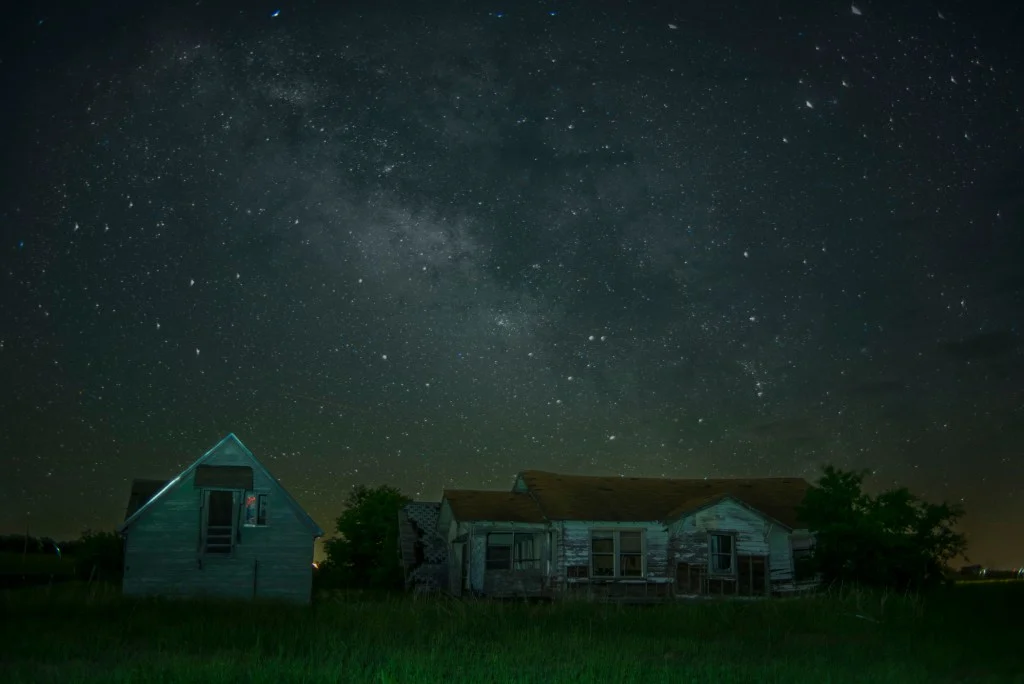
Denali National Park
Denali offers something unique among this distinguished list of stargazing spots; the chance to see the otherworldly effects of Aurora Borealis, also known as the Northern Lights.
This phenomenon draws people to Alaska from across the world, which is best seen in fall, winter, and early spring.
Summer visitors will miss out on the Northern Lights and perhaps most stars entirely. Alaska’s northerly latitude means summer skies don’t get dark enough for good viewing.
Denali benefits from fantastic night sky views thanks to its remote location, nearly free of light pollution. In many cases, you’ll be able to observe the Milky Way without any binocular or special equipment.
Due to the harsh winter weather, only one of Denali’s campgrounds is open year-round, the Riley Creek Campground.
Still, you’ll find only the most basic services available there any time other than summer. Four different lodges operate inside the park, though these all operate seasonally. There’s also a variety of privately-owned places to stay in the nearby towns of Healy or Cantwell, as well as on the road to the park.
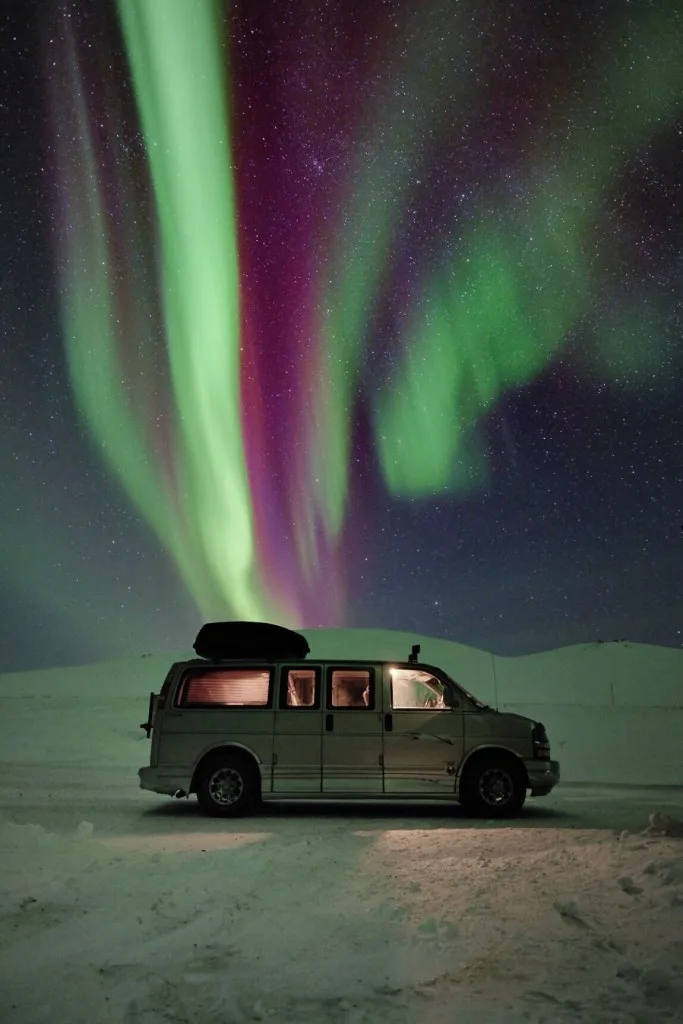
The Grand Canyon
Anyone who’s ever seen a photo of the Grand Canyon knows how breathtaking it can be. Now, just imagine that same view at night, under a panoramic dome of thousands of stars.
The Grand Canyon offers a unique stargazing opportunity that allows you to enjoy the fantastic views of the universe, often with the comforts of civilization relatively close at hand. Grand Canyon National Park has been an officially designated Dark Sky Park since 2019.
You may be surprised just how much you can see from the visitor’s center at Mather Point, even with the naked eye. You can also stop at any of the numerous viewpoints along the south rim, particularly Moran Point or Lipan Point.
For those feeling extra adventurous, try hiking down into the canyon and overnighting at one of the numerous backcountry campsites like Bright Angel or Indian Garden Campground. Or spend a night at Phantom Ranch. Staring up at the stars above the canyon walls will be an image you’ll never forget.
There are also four developed campgrounds available, three at the south rim and one at the north. You even have your choice of several hotels and lodges within the park, some just a few steps from once-in-a-lifetime night sky views.
Pro Tip: We recommend trying one of these amazing free campsites at the Grand Canyon.
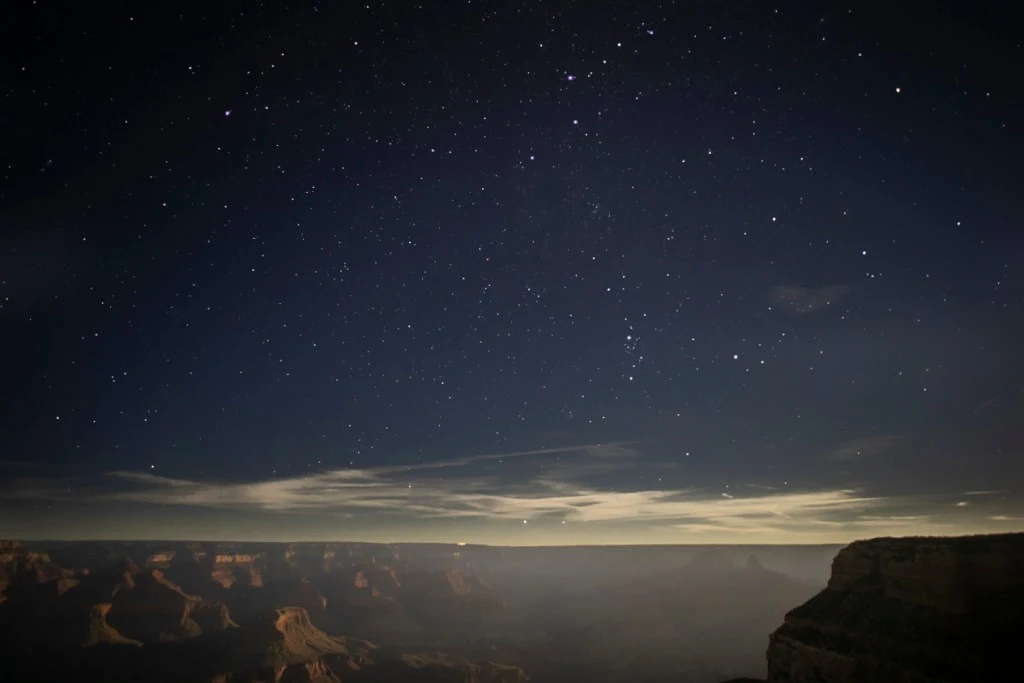
Great Sand Dunes National Park
Stargazing at Great Sand Dunes National Park is a unique multisensory experience.
Not only is the park an official Dark Sky Park, but it’s also set to become only the second park in the world with a “quiet designation.”
If you’re looking for some peace and quiet while you take in the universe, this is an excellent choice. Great Sand Dunes benefits from a combination of dry air, little light pollution, and high elevation to create some amazing viewing opportunities.
Your best views of the Milky Way here will come in late summer and early fall.
The park recommends checking the phase of the moon before arriving. Stargazing is best on moonless nights or nights with a late moonrise. Park Rangers also host nighttime events on occasion, so keep an eye on the schedule if you’re making a trip.
You’re free to wander the dunes and pick out your own private skywatching spot. Just make sure you keep in mind where you parked, as the dunes can get disorienting at night!
Inside the park, your only official camping choice is the Piñon Flats Campground, which operates from April through October. This basic campground comes with a few services like water and toilets. Backpackers can avail themselves of one of several backcountry campsites, and there are also multiple campgrounds located nearby the park as well.
Pro Tip: When we went stargazing at the Great Sand Dunes, we camped at this great free campsite.

Death Valley National Park
Death Valley may be best known for its low elevation and scorchingly high temperatures, but as the saying goes – “half the park is after dark.”
This national park is another holder of the coveted Dark Sky Park title, taking the honor in 2013.
Since mountains surround the Death Valley area, you may have part of the sky obscured, depending on your viewpoint. Some of your best bets include Harmony Borax Works, Mesquite Flat Sand Dunes, Ubehebe Crater, and Badwater Basin.
The first two options benefit from being close by to some of the park’s amenities. While Badwater Basin provides the one-of-a-kind experience of stargazing from the otherworldly salt flats.
You’ve got no shortage of camping options at Death Valley National Park; a dozen campgrounds in total, including a trio operated by private companies.
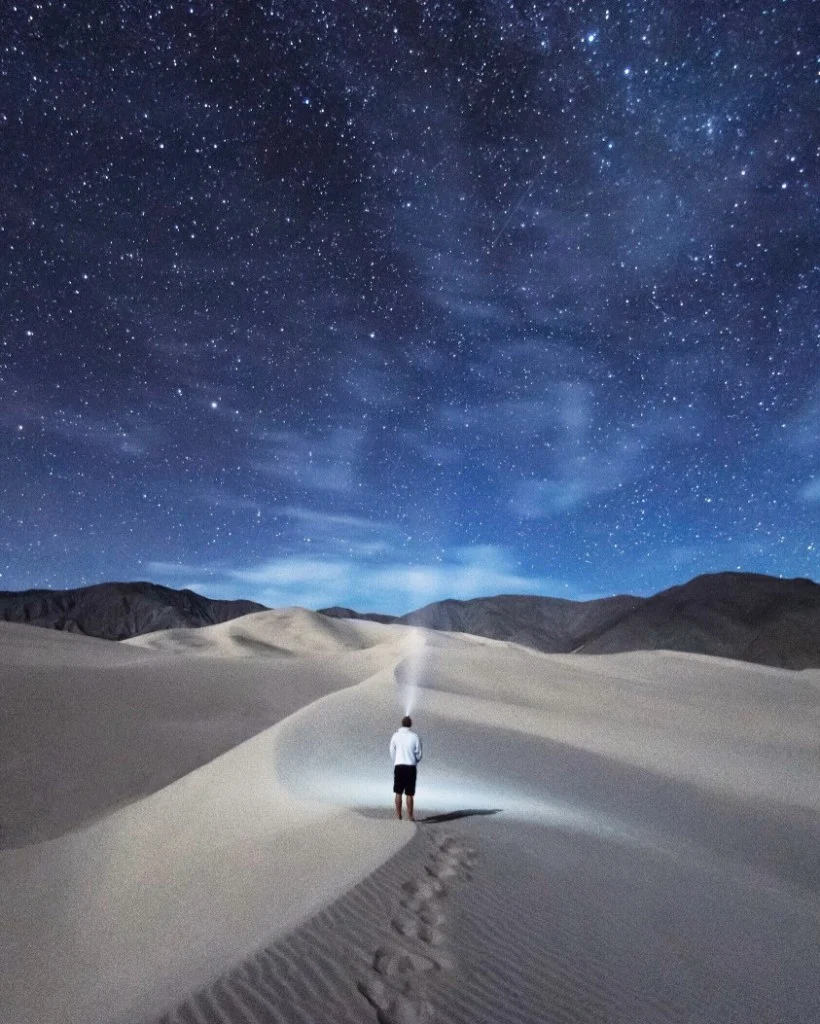
Cherry Springs State Park, Pennsylvania
Cherry Springs is the rare state park to earn the Dark Sky Park title. It’s also the only spot on our list in the eastern United States.
Due to its much higher population density, the east coast doesn’t offer many opportunities for true dark skies.
Thanks to its relatively high elevation in a mostly undeveloped portion of Pennsylvania, you’ll have as many as 85 nights a year of ideal stargazing conditions. Fall and winter generally provide the best viewing opportunities.
It’s hard to find a bad view at Cherry Springs State Park. In fact, the park is designed for observing the night sky.
Check out the designated Night Sky Viewing Area or Overnight Astronomy Observation Field for some of the best spots. Serious amateur astronomers can take advantage of included wifi, electricity, and concrete telescope pads in the latter location.
You can even plan a trip for one of the park’s two annual Star Parties in June and September.
Camping is available at the park’s rustic campground from April through October. Don’t expect any amenities other than a fire ring and picnic table, though.
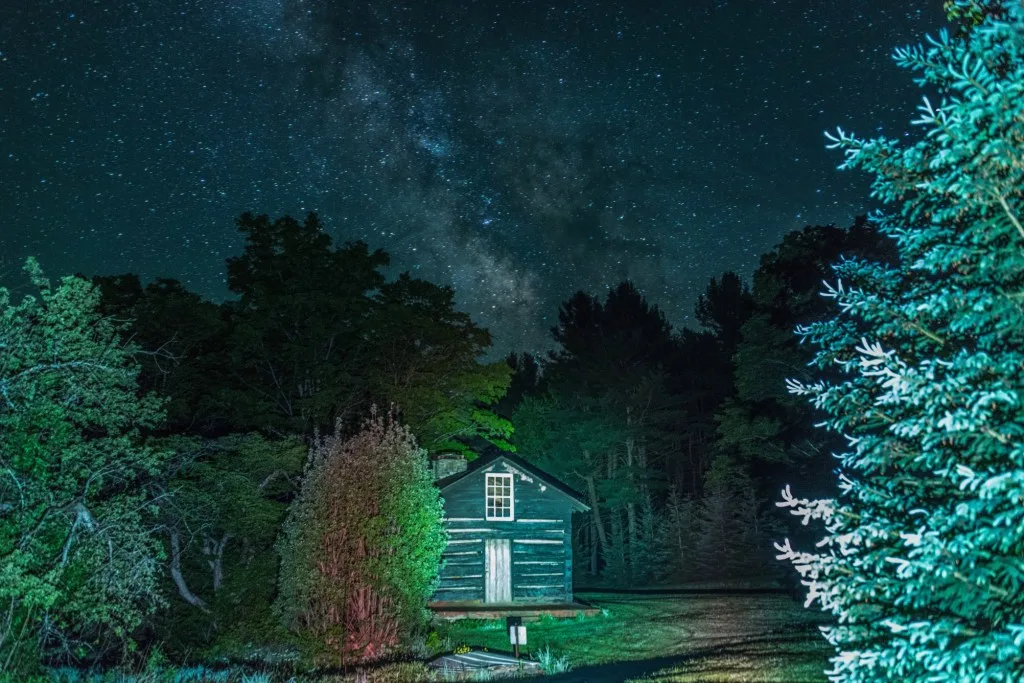
Sedona, Arizona
Sedona’s red rocks and vortex vibes draw thousands of visitors a year. Many don’t realize it’s a dark sky haven, too.
Sedona offers excellent stargazing conditions for most of the year, other than mid to late summer. This is when Arizona traditionally receives most of its rainfall.
One of Sedona biggest advantages as a stargazing destination is the truly enormous number of spots with unforgettable views. You could come back dozens of times and still find unique views of the night sky set against the towering red rock mountains and sweeping desert.
You’ll find a wide variety of campgrounds and dispersed camping in the Sedona area. If camping outside of a designated campground, be careful to ensure you have proper permits and permission.
Pro Tip: Here are all the best camping spots in Sedona.
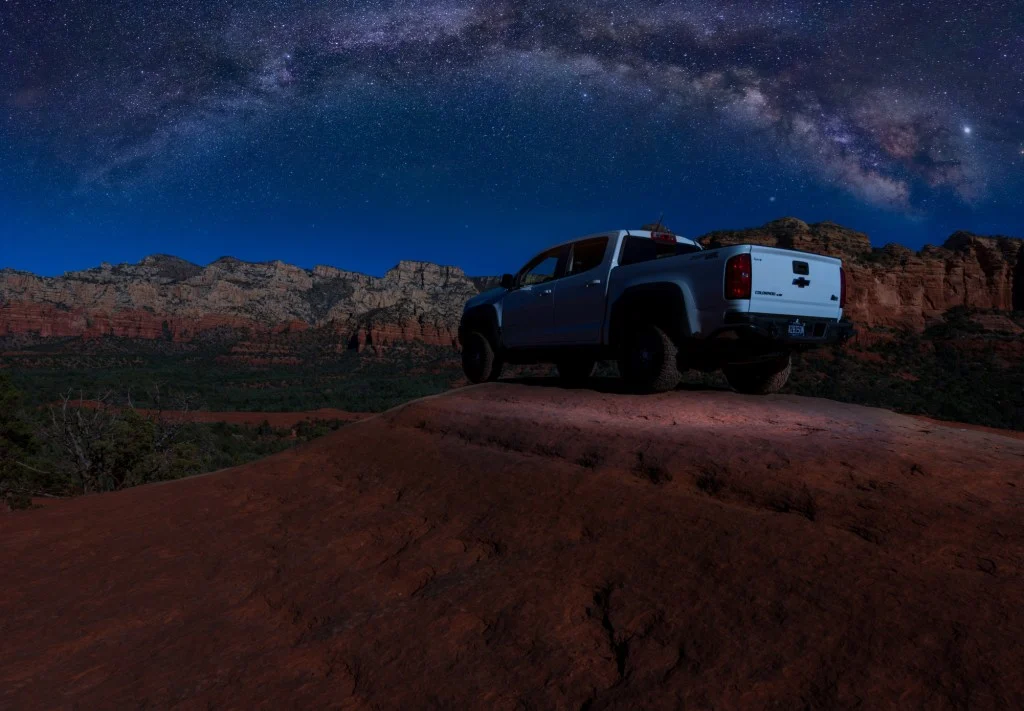
It’s Time to Stare at the Sky
Stargazing is truly one of the most accessible hobbies for those interested in science or nature – especially frequent travelers.
With this trusty list, you’ll be able to see some of America’s best destinations and some of the night sky’s biggest delights. The wonders of the universe are waiting – all you need to do is look up!
Discover the Best Free Camping Across the USA
To be honest with you, we hate paying for camping. There are so many free campsites in America (with complete privacy).
You should give it a try!
As a matter of fact, these free campsites are yours. Every time you pay federal taxes, you’re contributing to these lands.
Become a FREE CAMPING INSIDER and join the 100,000 campers who love to score the best site!
We’ll send you the 50 Best Free Campsites in the USA (one per state). Access the list by submitting your email below: